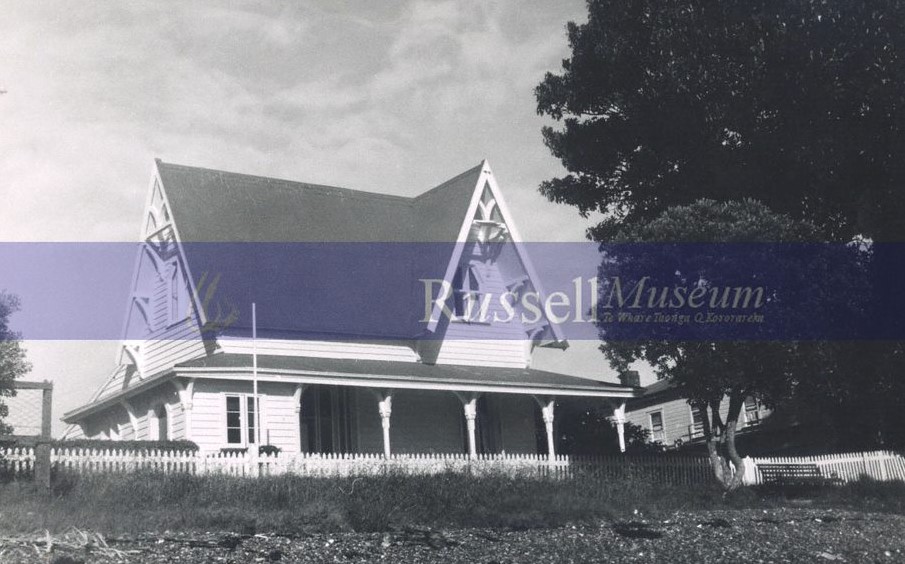The old Custom House (former Russell Police Station) building on the waterfront is attracting much interest, so it’s timely to tell its story. Thanks to original curator Marie King, we can share a bit more about our other iconic waterfront property. The architect was William H Clayton, the first and only Government architect, although no one quite knows why he chose a Gothic architecture style for the building other than to project an image of respectability and moral authority.
The Custom House building was started in 1869 and was finished in 1870, to be the residence of H.M. Collector of Customs. The first occupants were Edward Binney Laing, his wife Zenobia and the family of several daughters and young son. It was the Laings who planted the Moreton Bay Fig tree in the front garden, which was well inside the fence. The Bay was enjoying a period of prosperity and Mr Laing was busy with a fair amount of overseas shipping and when the Postmaster quit, he was required to act in that capacity as well. After 15 years Mr Laing finished the role and was presented an illuminated address “signed by every man of consequence in the County – 49 of them” and a purse of sovereigns.
The next Customs Officer was Benjamin Bailey but it came as a nasty shock to Russell when he was transferred in 1890 and not replaced. With less shipping, the Government decreed the Customs office was not economic and combined the role with the Harbourmaster. The Customs House stood empty for a while, then leased to tenants for 5 shillings a week. A few years later, another Government Department, the Police Department took it over, because Russell needed a new Police station.
In what appears to be a “Groundhog Day” action, the old Police Station, lock up and residence located on the Strand, next door to the Public Library was showing signs of age and needed repairs. The Government decided it would be more economical to abandon the old Police station and move the Policeman and all his gear along to the former Customs House, where it has been the Police Station ever since.
In 1931 the building managed to survive the fire at the original Gables next door, but the south wall was so badly scorched that no paint would stay on it for years. The Morton Bay fig was terribly damaged that it not expected to survive, yet it has done and continues to this day. In 1974, the Ministry of Works decided to re-roof the building with shingles rather than the cast iron that had been there in living memory, unclear when it had originally been shingled. Sol Te Whata, the craftsman doing the work, discovered the evidence, finding a marks left by shingling nails and a pair of ancient kauri shingles.
Today, the building’s future is uncertain. It is a Heritage Category 1 building, with and the Fig Tree listed as a notable tree in the Far North District Council’s list of trees, to be monitored annually and cared for. Heritage New Zealand are preparing a covenant so that whoever takes on the responsibility for this iconic building will be required to care for it properly.






























